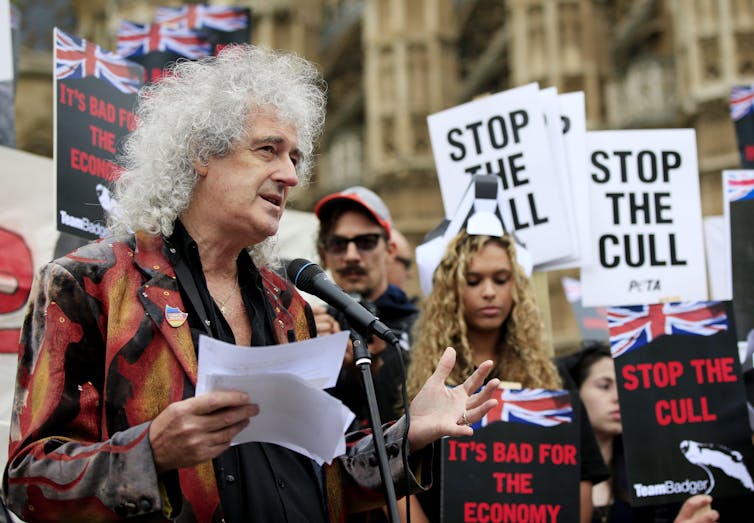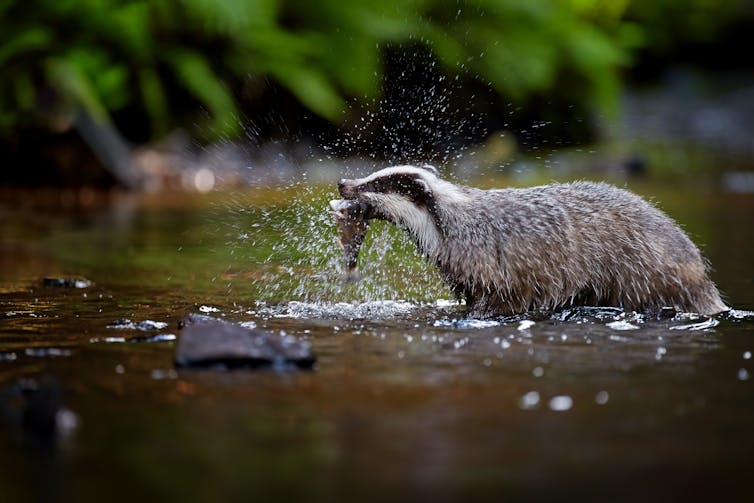Why can’t we leave badgers in peace? They are distinctive and iconic animals, but are subjected to shockingly high levels of abuse and criminal behaviour. Only very recently, a 28-year-old teaching assistant has been found guilty of animal cruelty after the RSPCA and police found pictures of her abhorrent badger baiting activities on a closed Facebook group.
Yet, with their trade mark black and white markings, large social groups and shy nature, badgers were very much part of British culture – they feature in classic children’s literature with characters such as Bill Badger, the best friend of Rupert the Bear, and kindly Mr Badger in Kenneth Grahame’s Wind in the Willows. They seem to have the unusual status of being one of the most loved British mammals in fiction, but one of the most persecuted in the real world.
Badger cull impact
Despite being the UK’s largest remaining carnivore, badgers are omnivorous and emerge from their setts – elaborate systems of tunnels and nest chambers – at night to hunt for earthworms (a large proportion of their diet) as well as insects, fruits, cereals and small mammals.
Inevitably, badgers do often wander through fields with cattle. And they also happen to be the unfortunate carriers of a bacteria Mycobacterium bovis which causes severe disease in cows. As bovine tuberculosis (bTB) can wipe out a farmer’s entire herd and livelihood, it led to the UK government sanctioning its controversial badger cull, which has been responsible for the ongoing killing of thousands of the animals since 2013.
It is likely that badgers unwittingly help to spread bovine TB – but the evidence is unclear about how much culling actually helps to reduce the disease in cattle. In 2019, research found that it could in fact make things worse by pushing badgers out into other areas where culling is not taking place.
Whatever the impact of the culls, there can be little doubt that they had an effect on public perception.
There was huge public support for badgers through organisations such as the Mammal Society and the Wildlife Trusts who are opposed to the cull.

Some animal campaigners feared that they resulted in the badger becoming “demonised” in certain parts of the UK – and government policy was at least in part responsible for the increase in cruelty towards the animal through barbaric activities such as badger baiting.
Read more: Badger cull alone won't work for eradicating bovine TB – but this might
It didn’t stop there. Although the badger cull itself is legal, it has been used as a front by some criminals in order to make money. One licensed badger cull contractor, for example, illegally killed 28 badgers outside of the cull period and then stored the bodies in a freezer in order to claim payment when the cull window was reopened.
Unsubstantiated perceptions don’t help
Badgers have also been implicated in the decline of the hedgehog, ‘UK’s favourite mammal’.
While it is true that badgers are the main wild predator of hedgehogs and a competitor for food, the two species currently coexist in many areas of England and Wales, with one study reporting badger presence at 49% of sites where hedgehogs were found.
And although hedgehog numbers have been reported to increase in badger cull areas, hedgehog numbers have declined all over the UK, including in regions with fewer badgers than the cull areas.
This suggests that while badgers may have some negative impact on hedgehogs as you’d expect with any predator-prey relationship, there is no clear connection between declining hedgehog numbers and the size of the badger population - and it’s important to remember that they have co-existed for thousands of years without human interference in the form of culls.
In fact, a report on hedgehog declines found that habitat loss through the intensification of agriculture, fewer hedgerows and tidier gardens are the main drivers.
Badgers are also perceived to be responsible for the decline of ground nesting birds, with a recent survey by the Game and Wildlife Conservation Trust (GWCT) showing that 75% of respondents believe this to be true. But a recent study looking at bird populations inside and outside badger cull areas in South-West England found no evidence that the removal of badgers made any difference.
What can be done?
To its credit, the National Trust has already banned badger culls on its land.
And, crucially, in May 2021 the government announced that the licensing of new intensive badger culls will stop at the end of 2022. Instead, they plan to focus their efforts on badger vaccination, increased cattle testing and development of cattle vaccines.
But despite this announcement, Natural England has approved seven new cull zones and 40 new licences which allow the killing of tens of thousands of badgers by 2025. Much more needs to be done to challenge the perception among the farming community that culling badgers is the answer to eradicating bovine TB.

As badgers are already fully protected by law – under the Protection of Badgers Act 1992 – the key to reducing persecution lies in ensuring perpetrators are caught and convicted. This requires increasing public awareness and recognition of wildlife crimes. The Badger Trust has produced a short film to show the different methods of badger persecution, how to recognise the signs and to highlight the importance of recording and reporting badger crimes.
As for hedgehogs, we can look closer to home when it comes to taking action.
Good habitat cover provides safety and refuge for hedgehogs, and in areas where food supply is plentiful, enables them to live alongside badgers. Creating hedgehog friendly gardens by leaving wild areas and enabling connectivity to other gardens – by installing hedgehog highways – has been found to significantly increase sightings of hedghogs.
In short, there is no reason why both of these popular animals can’t continue to coexist and thrive. And in any case, can it ever be right to demonise (and even kill) an animal for simply living its life?

